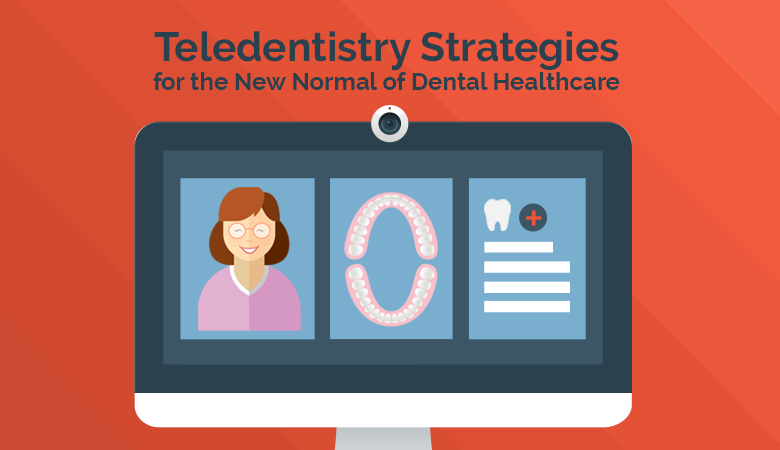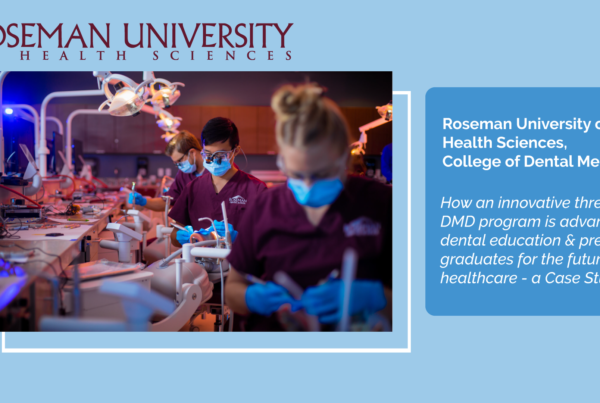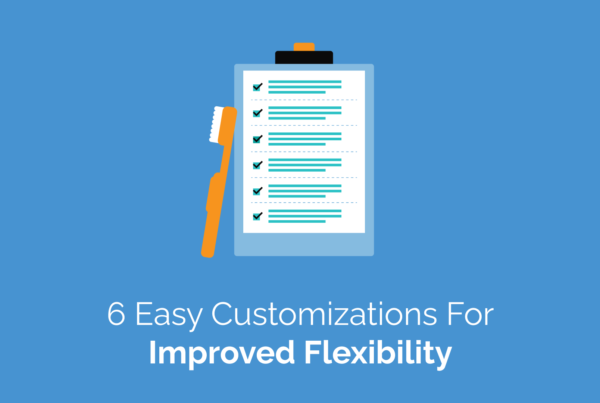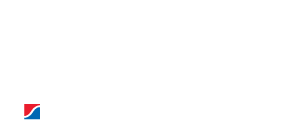Teledentistry is already very prominent in the field of preventative dentistry. Now, as more of us are working remotely due to global pandemic COVID-19, using teledentistry to assess non-urgent dental queries is quickly becoming an effective and practical tool. According to the American Dental Association (ADA), teledentistry is the use of telehealth systems and methodologies in dentistry. It provides dental care, advice or treatment remotely through virtual mediums. With effective teledentistry strategies, Exan hopes dentists, dental educators, faculty, and dental students can strive toward a model similar to “business as usual” as we participate in defining a new normal for dental healthcare.
Synchronous vs Asynchronous Teledentistry
The two primary modalities of teledentistry are synchronous and asynchronous. A live video of both the patient and the provider using audiovisual telecommunications technology facilitates synchronous teledentistry. Asynchronous teledentistry is a store-and-forward model that includes the transmission of recorded health information, such as patient photographs and videos, to the dental provider for evaluation.
At this time, Exan is looking into synchronous solutions that can help support our axiUm customers throughout the COVID-19 pandemic. Synchronous teledentistry is much more than a video call between a provider and a patient. It covers everything from obtaining patient consent to sharing patient medical information with a provider online, as well as billing and receiving payment for the visit. We acknowledge that there are barriers to entry for synchronous teledentistry, including but not limited to, facilitating proper documentation, providing services summaries, obtaining patient consent and accounting for financials.
Existing Teledentistry Strategies
We have spoken to a few axiUm clients who have recently established workflows to handle teledentistry visits. Although this is a small sample set, we have included some suggestions for software, scheduling, communication with patients, obtaining consent, and recording a visit based on existing teledentistry strategies.
- Some axiUm clients have been researching the best virtual mediums for facilitating synchronous teledentistry. The software of choice seems to be Zoom Healthcare, a video conferencing application that schedules virtual meetings.
- A few dental schools have created new appointment codes to track scheduled telephone and video appointments. They recommend adding meeting information to the appointment notes and adding a scheduler column to book virtual appointments.
- axiUm clients have sent links for teledentistry appointments to patients with a secure organization email when possible. When a secure email hasn’t been possible, they have been sure to obtain clearance from their respective legal departments to send links.
- A number of dental education institutions have ensured consent from patients before connecting them with their providers. They obtain consent over the phone and then record it in axiUm in an EHR form. Others use a form in axiUm PatientAccess where possible. They recommend consulting the dental school’s legal department when considering using a text or email response as consent.
- Some dental organizations are recording general appointment outcomes by adding a general or templated note and including teledentistry codes D9995 or D9996 as required. Here is interim ADA code guidance.
How Exan is Helping Now
Patient Appointment Notification Trigger
Does your dental organization currently uses axiUm PatientAccess for patient communication? If you would like to explore a trigger that notifies patients within their PatientAccess account on upcoming virtual appointments, please contact axiUm Support for more information.
If you do not use axiUm PatientAccess and are interested in pursuing a solution to send patient messages outside of axiUm and PatientAccess, please click here to submit a case to start a discussion with the axiUm Custom Services team.
Claims Creation Trigger
A trigger is available in axiUm that populates sets Place of Service = ‘02’ on claims that contain D9995 or D9996 procedures. See this article on the axiUm Community portal for more details (login required). To obtain the claims creation trigger, click here to submit a case to the axiUm Support team.
The Future of Telehealth
From our research, we have learned that the shift to telehealth may not simply be a temporary fix to assist in getting urgent care to patients during COVID-19. This trend may continue to grow over time. Telehealth delivers a modality that can be reached not only by those unable to visit a dental clinic during a pandemic. Patients with socioeconomically disadvantaged backgrounds, those living in developing countries, or those in areas with limited access to affordable dental services can also benefit from teledentistry.
We are interested to learn more about how you see teledentistry and telehealth evolving in the future and how Exan can support these changes. Sign-up for our Academic Product Research Group to be a part of the change.
Sources
https://www.ncbi.nlm.nih.gov/pubmed/23672799
https://success.ada.org/~/media/CPS/Files/COVID/ADA_COVID_Coding_and_Billing_Guidance.pdf





